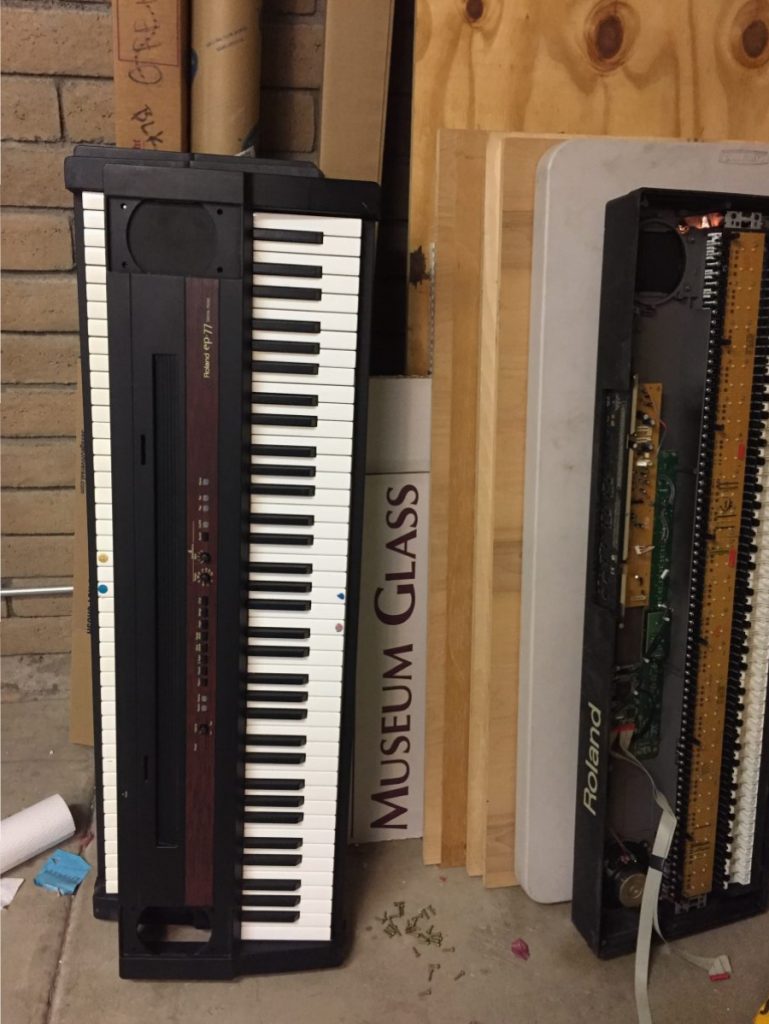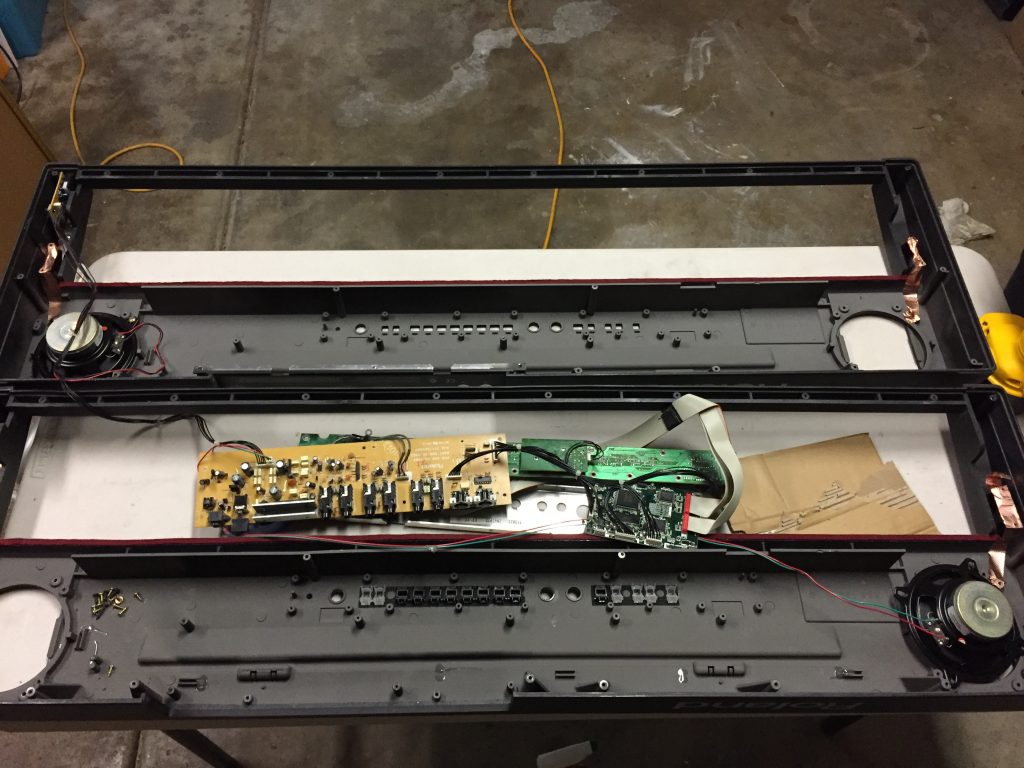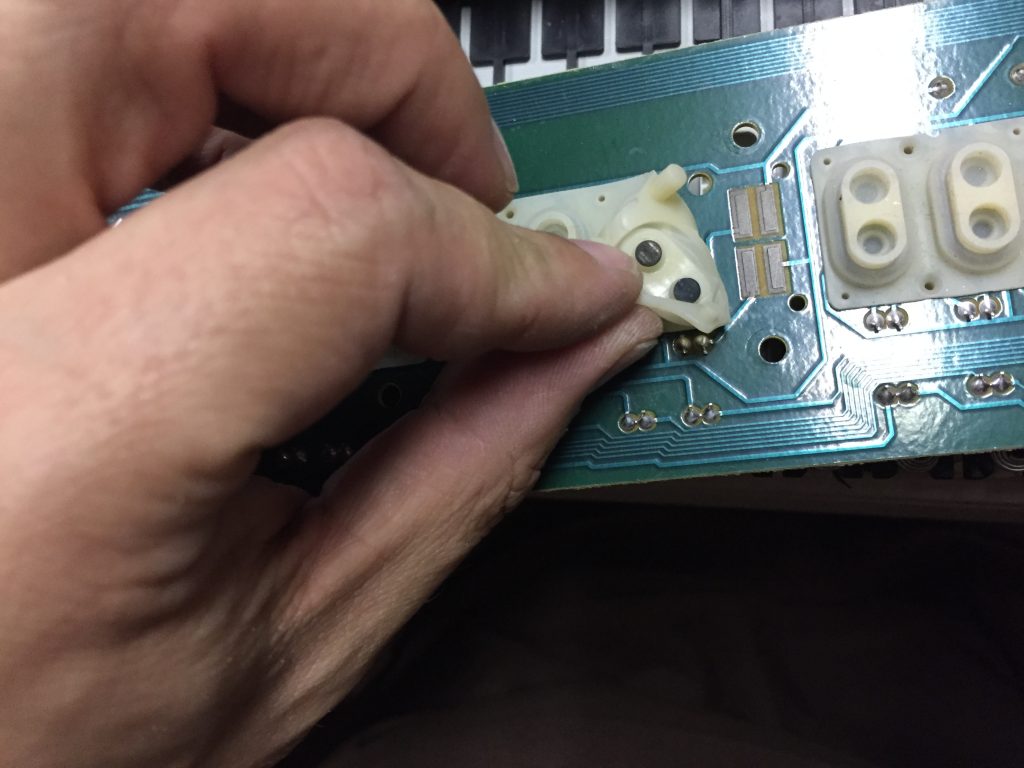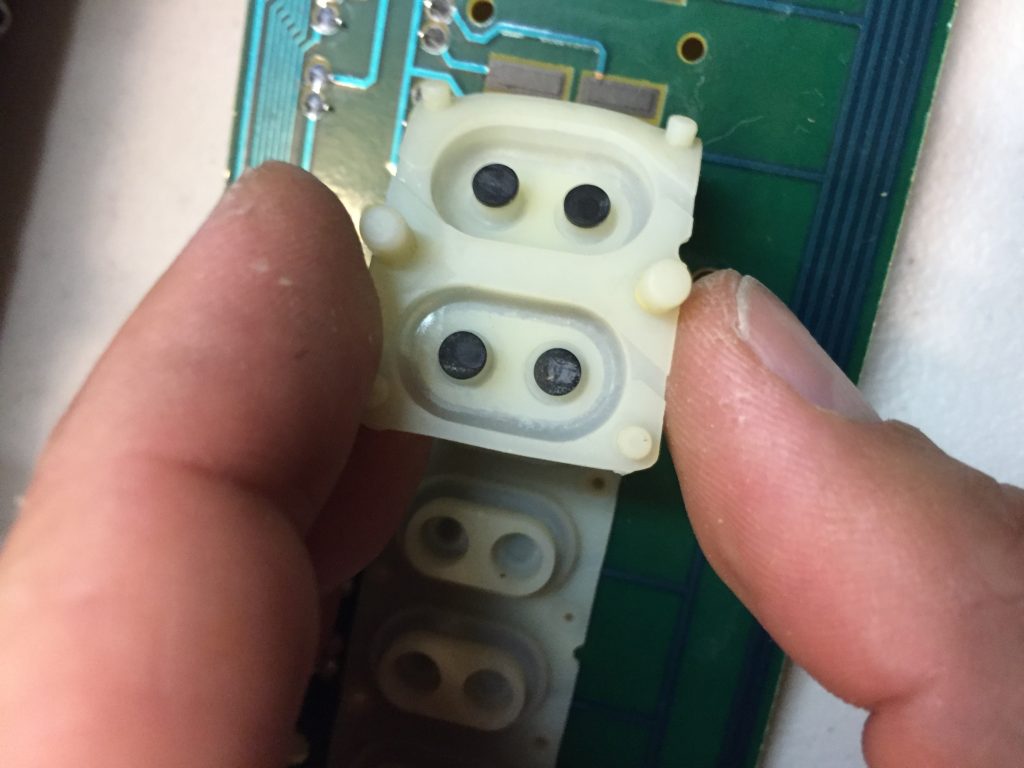Battle: Keyboard. [Roland 77 Keyboard Repair/restore]
Battle: Keyboard
 Setup: 8 Roland 77 Digital Pianos. Purchased at auction. Were previously teaching pianos. Were left in sun and many melted. I was an idiot and did not inspect these before bidding. I thought they were high end Roland’s which could fetch $500 each. Off by a factor of 10.
Setup: 8 Roland 77 Digital Pianos. Purchased at auction. Were previously teaching pianos. Were left in sun and many melted. I was an idiot and did not inspect these before bidding. I thought they were high end Roland’s which could fetch $500 each. Off by a factor of 10.
Pass: Earn more than $100.
Win: Earn more than $200
I should be able to sell these for $50-$100 each, so I only need a few working ones to make this happen. Should be “easy”.
Skirmish 1: Success.
The first keyboard is cake. Mostly it is just dirty. I have to swap out a speaker, which is relatively easy. relatively because I had all sorts of issues trying to crimp the fucking speaker wires together. After like 30 minutes of messing up strips/crimps I just twisted the damn things together, electrical taped it, and called it a day.
I have 1 piano with stand that could sell for $125.
Skirmish 2: Strip and clean
Encouraged by the easy win, I decide to go deeper. I could just walk away right now, donate the extras and move on with my life. Determined to avoid failure, and a firm believer in the sunk costs fallacy – I move forward.
After an hour of trying to pry off stickers and clean in little grooves, I remember to “work smarter not harder” – words of capitalist exploitation I learned at the knee of my rich uncle.
 I rip off two of the keysets ( what I’m calling the keyboard unit inside the piano ) and two of the frames and throw them in the shower. Yep – the shower. As long as I let them dry properly, the electrical circuits wont’ get damaged, and it will get them looking nice and clean, which will help them sell. And I’m really tired of trying to clean these things the hard way.
I rip off two of the keysets ( what I’m calling the keyboard unit inside the piano ) and two of the frames and throw them in the shower. Yep – the shower. As long as I let them dry properly, the electrical circuits wont’ get damaged, and it will get them looking nice and clean, which will help them sell. And I’m really tired of trying to clean these things the hard way.
3 days later I’m convinced they are nice and dry, and am back to work
Skirmish 3: Failure and more sunk costs fallacy
With the lowest of hanging fruit plucked, it’s time for the next rung. Easy Fixes. I’m going to start with one that has a warped frame, but otherwise is working. This warp has made some lower keys stick.
pull out the 40 goddamn screws in the bottom, pull out the keyboard ( only 4 screws… it comes out super fast ) and start moving it to a less melted frame.
 Here I am halfway through. The new frame is the one above, the older frame is below. I’ve moved the left speaker and jacks into position. The rest follows pretty easily. I did try and jam some “long” screws into short screw slots, but let’s not dwell on this.
Here I am halfway through. The new frame is the one above, the older frame is below. I’ve moved the left speaker and jacks into position. The rest follows pretty easily. I did try and jam some “long” screws into short screw slots, but let’s not dwell on this.
Now – I have 2 nice and clean keyboards from the shower the other day, so I’m going to drop those in. I’m pretty surprised when I find that the keyboard STILL has key sticking. How is this even possible!?! Easily answered, the keyboard really has to be forced into position – doing so stretches out the frame to allow for keys to work. NICE. All that’s left to do is test it out.. and…
some of the keys don’t play. shit. maybe the whole washing thing wasn’t so smart after all. So I pull out clean keyboard 1, drop in 2. Same issue, different keys. NOTE: This is another great place to walk away from this project. NOTE: I do not.
Skirmish 3b: fucking fuck
I’m really tired, so I’m gonna just skip through a bunch of crap. Basically I wasted 2 hours cleaning out the contacts to the boards. I did the best I could and while all keys are playing, they are not playing uniformly. For example, some of the keys will play at full force no matter how lightly they are struck. I know in general what the problem is, but I’m just too tired to work on it more, and I’ve already put in too many damn hours on a keyboard I’m maybe going to sell for $40.
Interesting part : here are the contacts, and you can see how they are a bit .. clogged.. for lack of a better word. I found some of the kid stickers covering part of one, but mostly the bad keys looked like this, and were “fixed” by just licking my finger and wiping off the contact. I thought they were fixed, but some are still playing at full velocity, and unsure how to address that. I have ideas, but.. yeah. it’s 4 am.


So, I just jammed the original dusty nasty keyboard unit in from the old frame. I’m too tired to even listen to it.
Skirmish Score:
- Time wasted: 2 hours
- Stuff learned: +3
- Keyboards working: 1/8
- Real work avoided: Lots. -20
- Money made: $-100
SCORE: Scrotum Slammed